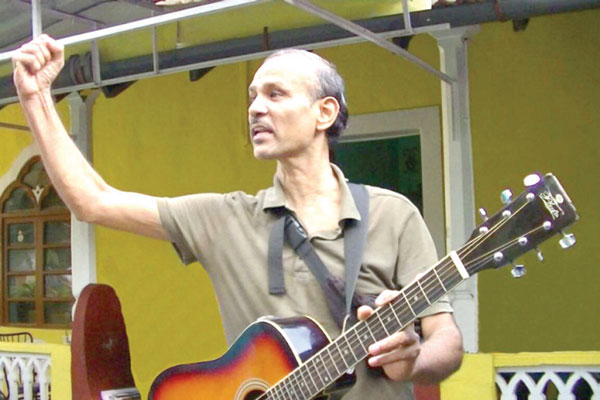By Matters India Reporter
Panaji, May 19, 2022: A former Catholic priest who had fought for Goa’s causes won a case against an illegal construction eight years after his death.
Bismarque Dias, who was known as Goa’s activist priest, had protested against a string of controversial, land intensive projects across Goa.
He had also opposed an illegal structure in a No Development Zone (NDZ). He died in November 2015 under mysterious circumstances.
The Bombay High Court on May 18 directed the Goa Coastal Zone Management Authority (GCZMA) to demolish the structure built in the St Estevam NDZ, within three months and then file a compliance report to the court, reports heraldgoa.in.
The court has also asked the coastal authority to furnish the compliance report’s copy to Rohit Bras de Sa, counsel for the petitioner late Dias.
Additional Government Advocate Sapna Mordekar has promised to the court that the structure would be demolished in two months from the date of the order.
The division bench comprising Justice Mahesh Sonak and Justice Valmiki S A Menezes had on September 15, 2016, issued an interim order asking the authorities to seal the controversial structure.
The interim order came as two other respondents Rohidas Narvekar and Seema Narvekar challenged the GCZMA action before the National Green Tribunal (NGT) Western Zone based in Pune.
The NGT on October 31, 2014, dismissed the case and directed the GCZMA to demolish the structure.
Relatives of Dias had alleged foul play in his death. Dias, then 52-year-old, was found dead in the Mandovi river near St. Estevam island in North Goa, around on the intervening night of November 5 and 6, 2015.
After his body was fished out, the opposition parties and civil society activists demanded a probe into his death. The police had found his clothes, mobile phone and other personal effects at the river bank.
Dias had participated in a series of civil society protests over land intensive projects ranging from a new greenfield airport, a golf course and an electronic city that the government had planned at Tuem, 45 km from Panaji.
Dias also filed a complaint with the National Green Tribunal bench in Pune over the construction of an alleged illegal road in his village.
His family members and supporters had refused to bury his body. He was finally laid to rest three years after his death.

